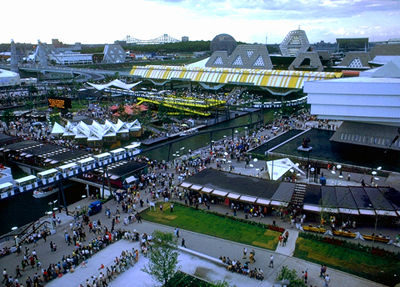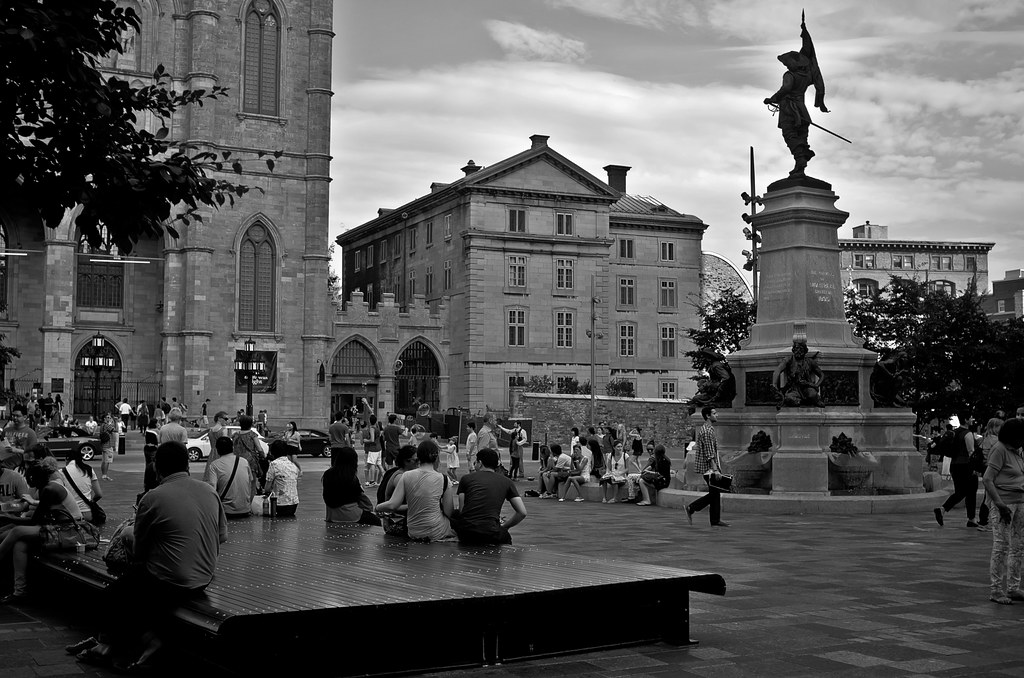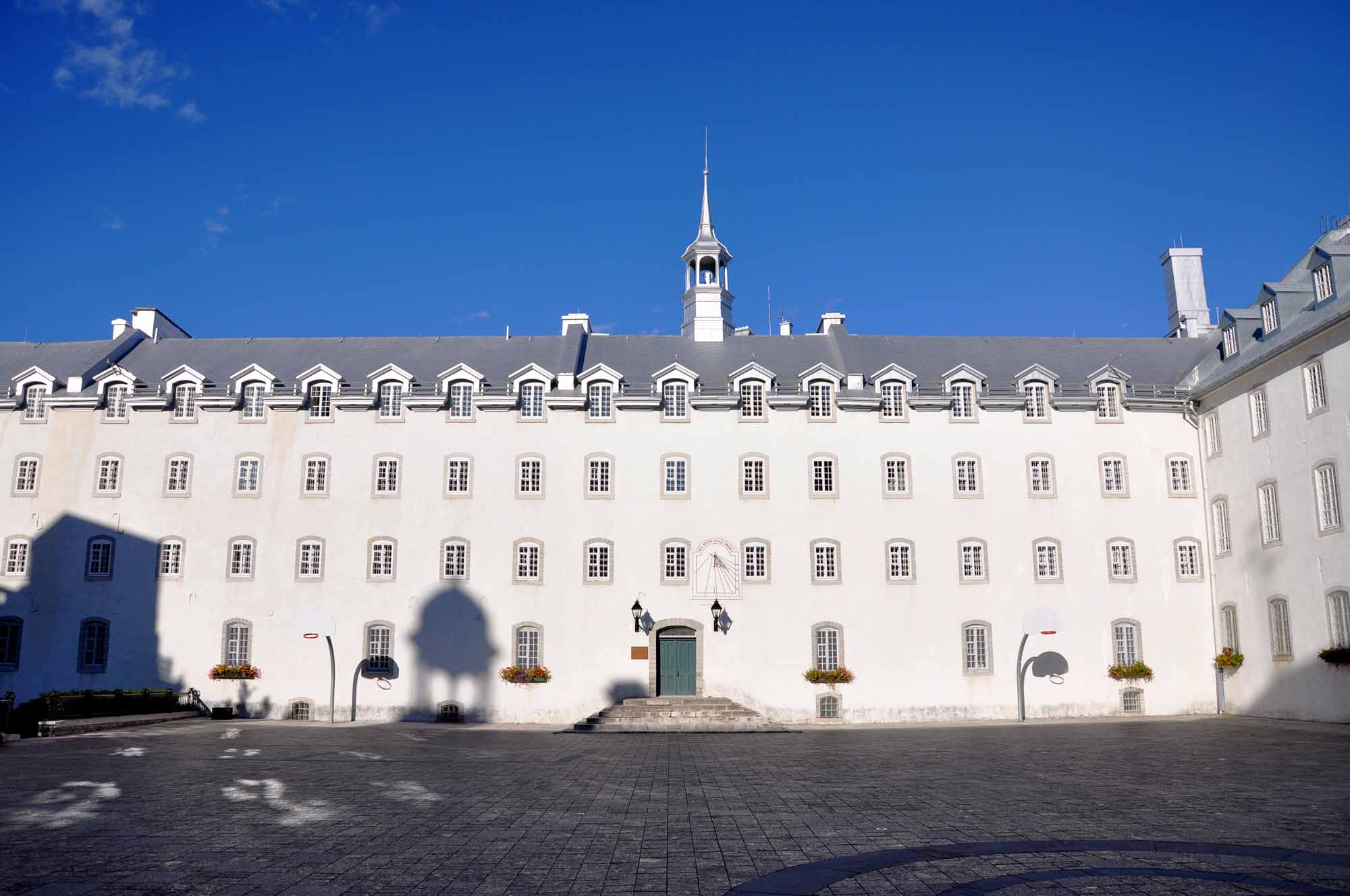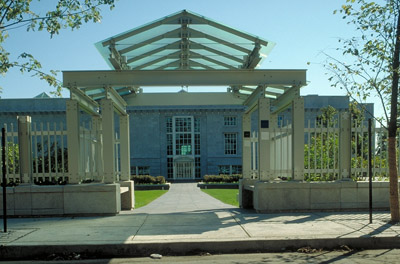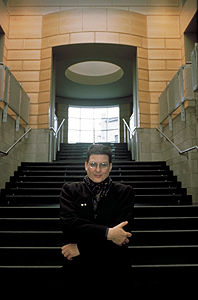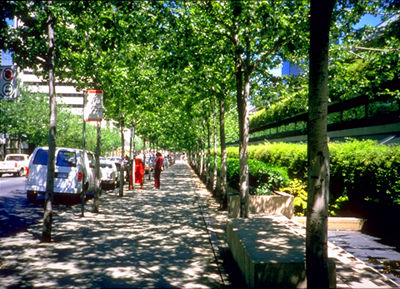Claude Cormier, CQ, RCA, landscape architect, artist (born 22 June 1960 in Princeville, QC; died 15 September 2023 in Montreal, QC). Cormier was the founding principal of the landscape architecture and design firm, CCxA (formerly Claude Cormier + Associés). Cormier’s projects often involved the transformation of urban spaces, including existing parks, plazas, and city squares, though he and his firm were also involved in the development of landscaping master plans for a variety of urban environments (see Urban Design). Cormier was well known for his whimsical artistic and architectural interventions in urban areas and for reimagining public spaces in innovative and playful ways.

Early Life & Education
Claude Cormier grew up on a dairy farm and sugar shack just outside Princeville, a town in the Centre-du-Québec region of Quebec. (See also Dairy Farming; Maple Syrup Industry.) Cormier was one of four siblings and the eldest of two brothers. His father, Laurent, was a farmer, while his mother, Solange, was a teacher.
Cormier lost his father when he was 17 years old. Despite this loss, he endeavoured to try and keep the farm running with the help of his younger brother, who was 15 years old. Cormier decided to study agronomy and plant genetics at the Université Laval in Quebec City with the goal of taking over the family farm (see Agriculture in Canada). The death of his father temporarily suspended those plans. His family would eventually sell their herd of livestock, some 50 cows, which provided Cormier with the funds to complete his studies in agronomy at the University of Guelph in 1982.
After completing his agronomy studies, and developing an interest in architecture, Cormier enrolled in the University of Toronto’s landscape architecture program. He graduated from the University of Toronto in 1986 and stayed in Toronto for several years to develop his career. He later undertook a master’s degree in the History and Theory of Design at Harvard University. In an agreement with Phyllis Lambert, often credited as a mentor to Cormier, the Canadian Centre for Architecture (CCA) financed a year of his studies in exchange for his professional advice on the maintenance of the CCA’s gardens.
While at Harvard, Cormier was influenced by the landscape design theories of Peter Walker and Martha Schwartz. Frederick Law Olmsted, credited as the father of landscape architecture in the United States, is also cited as one of Cormier’s primary inspirations.
Did you know?
Frederick Law Olmsted is responsible for the masterplan and design of Montreal’s Mount Royal Park, as well as New York City’s Central Park. (See also City Parks.)
Career
After graduating from Harvard University in 1994, Claude Cormier returned to Montreal to establish his own firm, Claude Cormier Architectes Paysagistes (later Cormier + Associés and as of 2022, CCxA). Cormier and his firm became well known for challenging the otherwise traditional and conservative conventions of landscape architecture. Notable projects include the revitalization of Montreal’s Place d’Youville, the former site of St. Ann’s Market and the Parliament of the Province of Canada. His firm also revived two of Montreal’s most prominent urban squares, Dorchester Square and Place du Canada. (See also City Parks.)
Some of Cormier’s earliest commissions were more akin to artistic installations than conventional landscape architecture, though as his career progressed, his artistic interventions—often described as playful and imaginative—would become emblematic of his unique style. His works were often commended for their poetic and narrative qualities, bold use of colour and practice of conceptual art and abstraction. An example of this is the installation, Lipstick Forest (1999-2002), a series of bright, lipstick-pink sculptures in the form of tree trunks, set along the ground floor of the Palais des congrès, Montreal’s primary convention centre.

In 2008, Cormier established a set of guiding principles for his work and his firm. Among them were “A Garden is About Experience, Not Plants,” “Colour is not a Decoration” and “Artificial but not Fake.”
Cormier was well known and respected for his strong business skills as well as his sense of humour. When a proposal to include life-size sculptures of dogs was rejected for a proposed fountain on the grounds that “dogs are not art,” Cormier responded with a report on the representations of dogs in art over thousands of years. The fountain was ultimately created—along with the dog sculptures—and is now the focal point of Toronto’s Berczy Park.

“We’re artists, but we also have a problem to solve. We’re not doing anything just because it looks pretty — there are always functional elements to resolve. We’re up against issues of safety, liability, social inclusion, environmental considerations …We have so many questions that we need to answer.” – Claude Cormier for AZURE Magazine (2021)
Legacy
Cormier established the Claude Cormier Award in Landscape Architecture at the University of Toronto in 2020, with a $500,000 grant. Cormier supported the university’s landscape architecture program with regular gifts and grants since 2000.
In 2021, authors Marc Treib and Susan Herrington published Serious Fun: The Landscapes of Claude Cormier the first book entirely dedicated to the work of Cormier and his firm.
Honours and Awards
Claude Cormier, and his studio, would accrue over 100 awards during his lifetime. In 2018, at the 11th edition of the Grands Prix du Design awards, Cormier’s firm received two awards for two of their best-known works outside of Quebec: Berczy Park in Toronto (award for landscape architecture and public planning), and the National Holocaust Monument in Ottawa (awarded the multidisciplinary prize). He would also win several awards for Toronto’s Sugar Beach.
In 2009, Cormier was made Knight by the Ordre national du Québec, the highest civil honour bestowed by his home province. He was also made a member of the Royal Canadian Academy of Arts in 2015.

 Share on Facebook
Share on Facebook Share on X
Share on X Share by Email
Share by Email Share on Google Classroom
Share on Google Classroom


